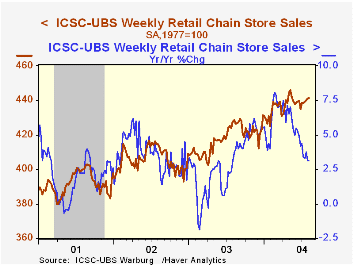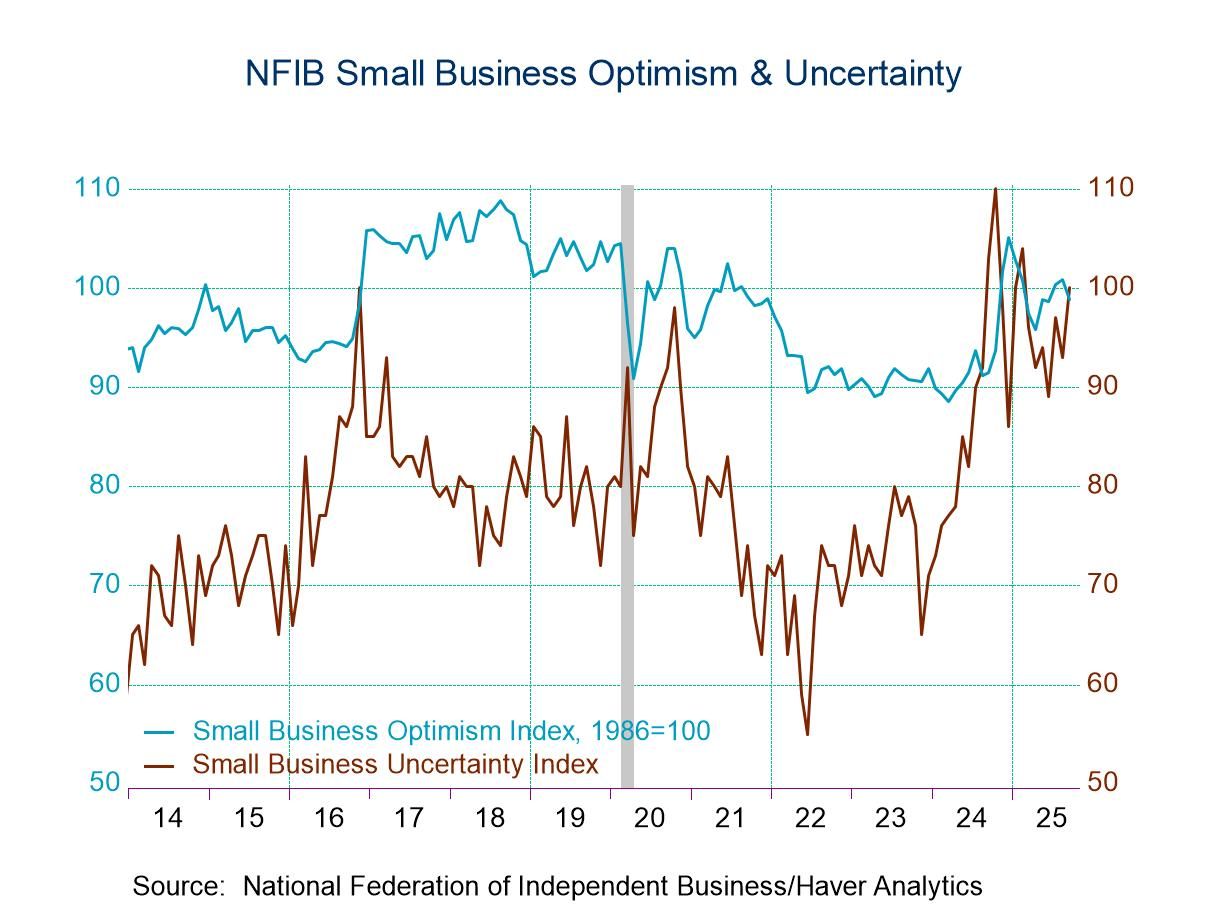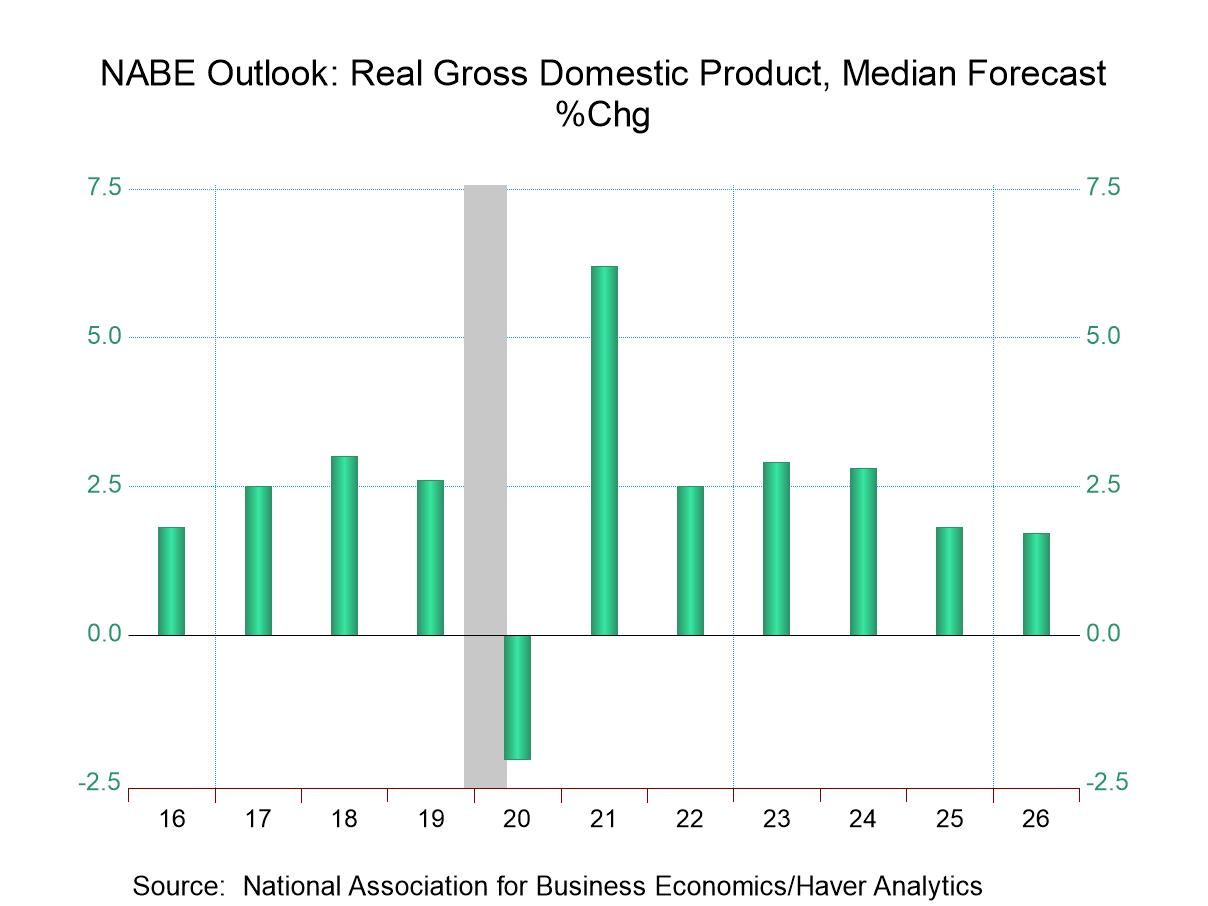 Global| Aug 10 2004
Global| Aug 10 2004FOMC Raised Interest Rates Again
by:Tom Moeller
|in:Economy in Brief
Summary
As expected, the Federal Reserve raised the target rate for federal funds by 25 basis points to 1.50%. The discount rate also was raised to 2.50%. The decision was unanimous. Perhaps suggesting that rates will be raised even further, [...]

As expected, the Federal Reserve raised the target rate for federal funds by 25 basis points to 1.50%. The discount rate also was raised to 2.50%.
The decision was unanimous.
Perhaps suggesting that rates will be raised even further, today's press release from the Fed indicated that "The Committee believes that, even after this action, the stance of monetary policy remains accommodative and, coupled with robust underlying growth in productivity, is providing ongoing support to economic activity."
Noting recent weakness in the US expansion, the Fed suggested that "This softness likely owes importantly to the substantial rise in energy prices. The economy nevertheless appears poised to resume a stronger pace of expansion going forward."
For the complete text of the Fed's latest press release please click here.
"New Keynesian Models and Their Fit to the Data" from the Federal Reserve Bank of San Francisco can be found here.
U.S. Productivity Growth Surprisingly Strong in 2Qby Tom Moeller August 10, 2004

Non-farm labor productivity grew 2.9% last quarter, a slowdown from 3.7% growth in 1Q but firmer than Consensus expectations for 2.0% growth.
Part of the upside surprise was due to a 3.8% (5.9% y/y) gain in non-farm output versus the 3.0% (4.8% y/y) rise in 2Q real GDP. Hours worked by all persons (employment times hours) also rose just a slight 0.8% (1.1% y/y).
Unit labor costs nevertheless grew at the fastest rate quarterly rate in a year, up 1.9% as compensation grew 4.9% (4.8% y/y).
Productivity in the manufacturing sector surged 7.5% (6.0% y/y) and rebounded from weak 2.8% growth in 1Q. Unit labor costs in the factory sector fell 2.2% (0.0% y/y).
| Non-farm Business Sector (SAAR) | 2Q '04 (Prelim) | 1Q '04 (Final) | Y/Y | 2003 | 2002 | 2001 |
|---|---|---|---|---|---|---|
| Output per Hour | 2.9% | 3.7% | 4.7% | 4.5% | 4.3% | 2.6% |
| Compensation | 4.9% | 4.0% | 4.8% | 4.0% | 3.2% | 4.1% |
| Unit Labor Costs | 1.9% | 0.3% | 0.2% | -0.3% | -1.1% | 1.5% |
by Tom Moeller August 10, 2004

Chain store sales inched 0.1% higher in the opening week of August according to the International Council of Shopping Centers (ICSC)-UBS.
Sales began the month 0.4% above the July average which rose 0.3% versus June.
During the last ten years there has been a 59% correlation between y/y change in chain store sales and the change in non-auto retail sales less gasoline.
The ICSC-UBS retail chain-store sales index is constructed using the same-store sales reported by 78 stores of seven retailers: Dayton Hudson, Federated, Kmart, May, J.C. Penney, Sears and Wal-Mart.
| ICSC-UBS (SA, 1977=100) | 08/07/04 | 07/31/04 | Y/Y | 2003 | 2002 | 2001 |
|---|---|---|---|---|---|---|
| Total Weekly Retail Chain Store Sales | 441.4 | 441.0 | 3.1% | 2.9% | 3.6% | 2.1% |
Tom Moeller
AuthorMore in Author Profile »Prior to joining Haver Analytics in 2000, Mr. Moeller worked as the Economist at Chancellor Capital Management from 1985 to 1999. There, he developed comprehensive economic forecasts and interpreted economic data for equity and fixed income portfolio managers. Also at Chancellor, Mr. Moeller worked as an equity analyst and was responsible for researching and rating companies in the economically sensitive automobile and housing industries for investment in Chancellor’s equity portfolio. Prior to joining Chancellor, Mr. Moeller was an Economist at Citibank from 1979 to 1984. He also analyzed pricing behavior in the metals industry for the Council on Wage and Price Stability in Washington, D.C. In 1999, Mr. Moeller received the award for most accurate forecast from the Forecasters' Club of New York. From 1990 to 1992 he was President of the New York Association for Business Economists. Mr. Moeller earned an M.B.A. in Finance from Fordham University, where he graduated in 1987. He holds a Bachelor of Arts in Economics from George Washington University.






